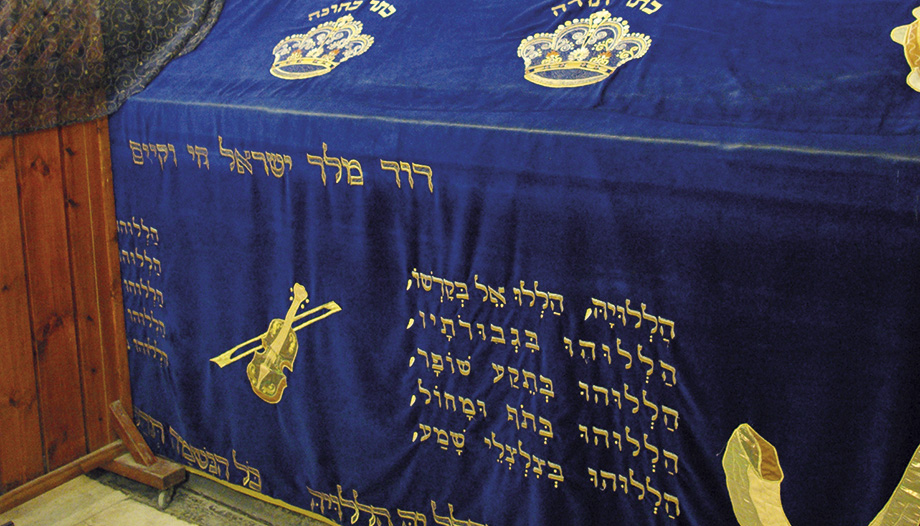What do we know about King David, and do we have any proof of his existence outside of the Bible? In a timeline the point marked by King David is significant in several ways. In addition to his famous fight with Goliath and so many scenes that appear in the biblical narrative, David marked the history of Israel with a key event: the establishment of Jerusalem as the capital of his kingdom, calling it the "City of David."
"David went with his men to Jerusalem against the Jebusites who dwelt in the land. These said to David: -You shall not come in here, for even the blind and the lame will reject you.. It was like saying: David will not enter here. But David took the stronghold of Zion, which is the city of David."(2 Samuel 5:6-8)
Historians date David's conquest of Jerusalem to around 1000 B.C., a date that is easy to remember and a mile stone in the history of Jerusalem. The challenge comes when it comes to connecting the biblical text with the archaeological remains. From a minimalist perspective one could say that any connection between the Bible and the Jerusalem stones is much later. Looking for David, what pieces of the puzzle do we have? The image of the shepherd turned king was engraved in the memory of the people and left its mark in the biblical tradition. But when we go down from the text to the ground, to the earth removed by archaeologists, we find a rough scenario: more silences than discoveries.
The modern reader knows that archaeology does not work like the news or the expert's report: neither exact dates nor confirmed names.
The terrain of Jerusalem and its surroundings stubbornly guards its secrets. From the tenth century B.C. B.C., the time in which the Bible places David and his son Solomon, we have almost no direct material evidence. Neither a stele that says "David reigned here", nor a monumental inscription with his name.
The Stele of Tel Dan
From the IX century B.C., however, we do have some light. C., on the other hand, we do have some light. A good example is the Tel Dan Stele. This inscription, discovered between 1993 and 1994 about 70 km north of the Sea of Galilee, is attributed to an Aramean king, Hazael of Damascus, who ruled in the mid-ninth century BC. C.
The text, written in characters very close to the Phoenician-Paleo-Hebrew alphabet, commemorates military victories over the kingdoms of Israel and Judah. In one of the fragments we can clearly read the expression Beit David ("House of David"), considered to be the first extrabiblical mention of King David as the founder of a dynasty.
The text is engraved using a type of writing that we call Paleo-Hebrew. And this is relevant to our story. In the First Temple period (from the 10th to the 7th century B.C.) the Israelites used the Paleo-Hebrew alphabet, an evolution of Phoenician, with angular letters, different from the way of writing known today as the Hebrew alphabet. This same Paleo-Hebrew alphabet can be seen on stone carvings, seals and small inscriptions that confirm the existence of an administrative apparatus and a written culture.
After the Babylonian exile, the Jews adopted the square Aramaic script, the direct ancestor of modern Hebrew. This change of script is much more than a graphic detail: it marks a historical bridge. It tells us which texts were copied earlier and later, helps us date manuscripts, and allows us to understand how the words we read in the Bible today were transmitted.
The Hezekiah Tunnel
Among the finds that we can touch and walk through, few have the symbolic power of the Hezekiah Tunnel. Excavated in the eighth century B.C., in preparation for the siege of the Assyrian King Sennacherib, this conduit of more than half a kilometer carries water from the spring of Guijon to the interior of the walled city of Jerusalem.
Any pilgrim can descend today and visit and walk through the tunnel, knee-deep in water, following the water along the route that 2,700 years ago ensured the life of the Holy City. During their exploration, at the end of the 19th century, archaeologists found a tombstone about halfway along the route: the Siloam inscription, a short Paleo-Hebrew text from the 8th century B.C. that tells how two groups of workers dug from opposite ends until they met in the middle.
When western explorers began to investigate the subsoil of Jerusalem, they were surprised by the precision with which this aqueduct had been excavated in rock. The route is about 533 meters long and has a drop of only half a meter. The text of the inscription confirms what the analyses of the tunnel had indicated: two teams of workers began to dig from opposite ends - one from the source of the Guijon, in the Kidron valley, and the other from inside the city - until they met in the center. The Siloam inscription recounts precisely this moment of the workers' meeting, making it one of the oldest surviving Hebrew documents and direct evidence of construction activity in the kingdom of Judah during the 8th century BC.
The Siloam inscription
The Siloam inscription, preserved in Istanbul, but found in the heart of Hezekiah's tunnel in Jerusalem, can be dated to the end of the 8th century B.C. and is written in Paleo-Hebrew.
Hezekiah is a descendant of David, and together with the "City of David" he had ordered to build the necessary infrastructure to resist the Assyrian siege. The connection of archaeology with the Bible is explicit: in 2 Kings 20:20 it is mentioned how King Hezekiah, foreseeing the attack of Sennacherib, "..." and how he had to "build a city of David".covered up the water sources outside the city" y "water to the west of the city of David.". The tunnel fits that description perfectly, and its material existence corroborates that Jerusalem was actively preparing to resist the Assyrian siege of 701 BC.
Biblical archaeology does not give us absolute truths. Rather, it invites us to walk among chiaroscuro: we know much of the eighth century, something of the ninth, almost nothing of the tenth. We have names engraved on enemy stelae, tunnels dug in living rock, inscriptions in an ancient alphabet. We can safely say that the Bible does not dwell only in the sphere of myth. The land of Israel preserves material traces that correspond to biblical stories, confirming that these texts are born of a concrete history.
Let us return to the initial question: where is David? The honest answer is that we do not yet have the stone that names him in the 10th century. We do have the 9th century reference to his "house", his dynasty. We have the letters of his people, which changed shape but not memory. We have the tunnel of a direct descendant king that shows that Jerusalem resisted. Each finding, no matter how small, confirms that these stories were born in the flesh and the earth, among real towns and cities. n
D. in Biblical Theology and Director of the Cretio Foundation.







